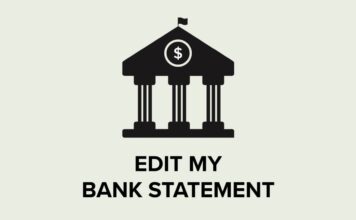Why Great Returns Don’t Attract Investors

It’s common for talented traders and aspiring investment managers to build impressive performance track records, only to find that few will take them seriously when they start marketing. It turns out that creating an alpha-generating mouse trap is not always enough to get the world to beat a path to your door.
Why should this be? Why would many professional investors prefer to invest in funds with strong but unexceptional track records instead of with managers whose past performance is truly fantastic? Why do many allocators not even examine managers with extremely impressive records?
The answer, in many cases, is credibility. While you, as a manager, may have generated 40%+ returns for three straight years, and maybe you even have brokerage statements showing your success, the experienced allocator has seen it all before and knows that, more often than not, the track record they’re seeing is not indicative of the investment performance they’re likely to achieve by investing.
Why are allocators so skeptical? And, in many cases, are they right to be wary? This question is at the heart of why it’s challenging to build and communicate a credible investment track record.
Creating Verifiably Tamperproof and Complete Records
An investment track record is just a summary of past trades. However, the calculation that takes trades and turns them into a track record is exquisitely sensitive to minor changes. Whether a position was established on Jan 3rd or Jan 4th, or whether certain trades or accounts were omitted from the record, can make the difference between an excellent track record and a poor one.
Capital allocators understand this deeply, and thus, when they are presented with data that COULD have been changed after the fact in any way, they generally follow the prudent, conservative approach of treating these track records as highly suspect.
PowerPoint slides and Excel spreadsheets are inherently suspect. Even brokerage statements are insufficiently complete and credible.
The traditional approach that passes muster uses a 3rd party service like an administrator or an auditor who receives real-time or close-to-real-time trade records directly from a prime broker. This approach is a staple of audited funds but isn’t available for everyone and every strategy. Prop traders, SMA managers, aspiring fund managers, model builders, and many others often do not have this option for operational or cost-related reasons. A different means of creating verifiably complete and tamperproof track records is needed for these managers, but how?

Showing that a Track Record Isn’t Just the Best of Many
Even if a track record is demonstrably tamperproof and complete, it becomes meaningless if it’s just the best of the 1000 track records a manager has maintained. Experienced allocators assume that if they’re being shown SMA performance, it’s the best SMA out of dozens. If they’re being shown a backtest or a model, it’s the best out of millions or even billions due to overfitting. This assumption (often made silently and implicitly) completely undermines a manager’s messaging around his past performance.
As a manager, even if you’ve only run a single live money portfolio in a single brokerage account, it can be incredibly challenging to credibly prove to an allocator that you haven’t maintained dozens of other accounts you’re not presenting. Survivorship bias is tough to disprove!

Establishing Your Credibility in Minutes
Attracting capital is a very competitive endeavor. Allocators are pitched hundreds or even thousands of managers for each with whom they invest. Allocators usually won’t spend more than a few minutes screening a potential manager to decide whether to examine them more closely.
A performance track record is one of the primary items allocators look at during an initial screen. And if, in those first couple minutes, the manager isn’t sure whether the performance record is complete or whether it might have been cherry-picked, the incentive structure for most allocators encourages them to assume the worst and move on.
Allocators tend only to be willing to spend more than a few minutes on diligence for managers in whom they’re already very interested. Any complex approach, like sharing brokerage statements or involving 3rd parties and lawyers, is bound to fail simply because they are too labor-intensive for a typical allocator to verify.
Two Solutions
The problems above are a major driving force for much of the fund regulatory and compliance apparatus we observe today. Investment funds in most jurisdictions are required to register and undergo professional audits to be allowed to solicit investors. While this regulated approach generally does create credibility for a manager’s track record, it’s not appropriate or relevant for many who seek to attract clients without setting up a fully regulated fund structure for every strategy they develop. Even many registered managers operate strategies that don’t fit neatly into the existing regulated apparatus.
validityBase has built a set of automated tools that allow the creation of verifiably tamperproof and complete track records that cannot be secretly cherry-picked. These tools enable managers to share validated track records via simple, beautiful dashboards that show allocators credible and easy-to-interpret trading track records in minutes.
If this is something you might find helpful as an allocator or an investor, please e-mail hello@vbase.com or visit our website to learn more.
Recent Posts
 Why Great Returns Don’t Attract Investors
Why Great Returns Don’t Attract Investors
Many investors are unable to convert strong returns into clients or capital. Learn why and how to fix it.
 Mitigating BorgBackup Client Compromise
Mitigating BorgBackup Client Compromise
A compromised BorgBackup client allows undetectable tampering with past backups. vBase offers a simple solution.
 Stop Using Brokerage Statements to Show Your Track Record
Stop Using Brokerage Statements to Show Your Track Record
Many traders use brokerage statements to create a verifiable track record. Unfortunately they are not credible for this purpose. A better alternative exists.